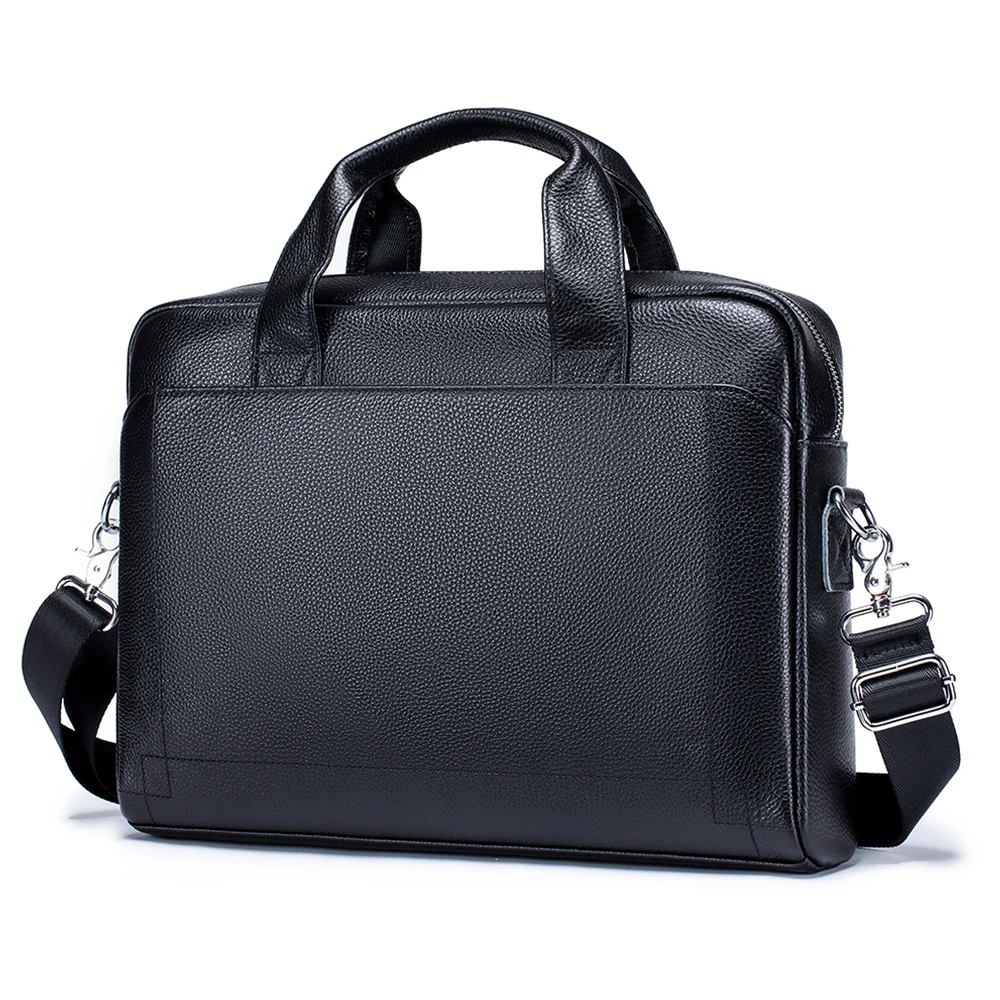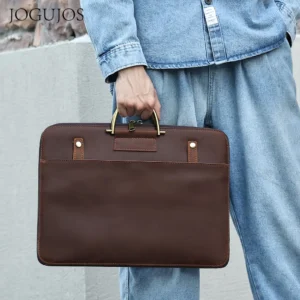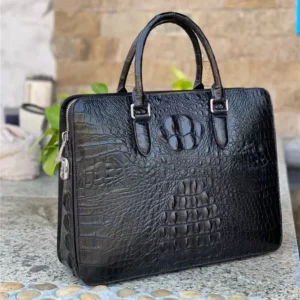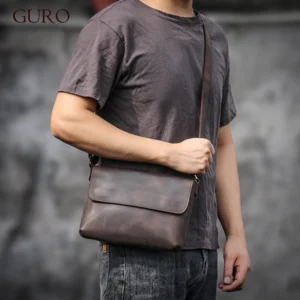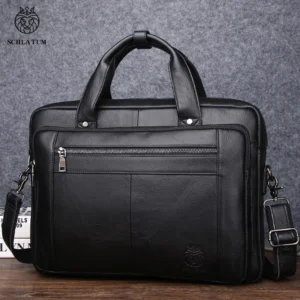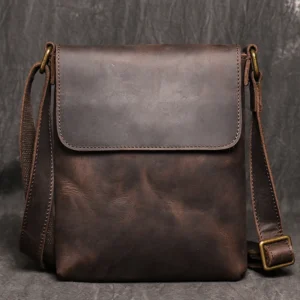When investing in leather goods, understanding the differences between leather types can help you make an informed decision. Full grain and top grain leathers are two premium options you’ll frequently encounter, especially when shopping for high-quality bags and accessories. This guide will walk you through everything you need to know about these leather types to help you choose the perfect leather product for your needs.
What is Full Grain Leather?
Full grain leather represents the highest quality grade of leather available on the market. It’s cut from the topmost layer of the animal hide, keeping the entire natural grain completely intact. This premium material undergoes minimal processing—only the hair is removed, while the natural surface remains unaltered without sanding or buffing.
The defining characteristics that make full grain leather so sought-after include:
- Natural markings, scars, and variations that prove its authenticity
- Visible pores and grain patterns unique to each piece
- Exceptional durability due to the intact, dense fiber structure
- Development of a rich patina over time with use
- Superior breathability compared to processed leathers
When defining best leather briefcases, full grain leather consistently ranks at the top due to its unmatched quality and longevity. Each full grain leather piece tells a story through its natural markings—ranging from subtle variations in color to small scars or wrinkles that occurred during the animal’s life.
The hide selection process for full grain leather is extremely selective. Tanneries must choose hides with minimal surface imperfections since there will be no corrective processing. This selectivity contributes to the premium price of full grain products but ensures exceptional quality.
The tactile experience of full grain leather is distinctive—it feels substantial and slightly textured under your fingers. When properly cared for, items made from full grain leather can last decades, making them ideal for full-grain messenger bag collections and other investment pieces that gain character over time.
What is Top Grain Leather?
Top grain leather ranks as the second-highest quality grade in the leather hierarchy. Unlike full grain, top grain leather undergoes additional processing where the very outermost layer of the hide is sanded, buffed, or both. This processing removes natural imperfections and creates a more uniform appearance.
The defining characteristics of top grain leather include:
- A smoother, more consistent surface texture
- Fewer visible natural markings or blemishes
- A slightly thinner profile than full grain leather
- Enhanced stain resistance due to applied finishes
- More uniform coloration and appearance
Manufacturers often choose top grain leather when creating products where consistency is valued. The sanding process removes the strongest fibers in the hide’s surface, but this trade-off provides a more uniform canvas for creating refined leather goods. When classic leather briefcase comparison guides mention top grain options, they typically highlight this balance between quality and consistency.
After the initial sanding or buffing, top grain leather typically receives additional treatments like pigmentation, embossing, or protective coatings. These finishing processes further enhance its resistance to stains and provide more color consistency across products.
Despite being considered “second best” to full grain, top grain leather remains a premium material. It offers an excellent balance of quality, appearance, and price that makes it suitable for many high-end applications. The additional processing results in a material that’s often more immediately appealing to consumers who prefer consistency over natural character marks.
Distinctive Features Comparison: Full Grain vs Top Grain
Understanding the key differences between these two premium leather types will help you make an informed decision based on your preferences and needs.
| Feature | Full Grain Leather | Top Grain Leather |
|---|---|---|
| Source | Uppermost layer of hide with natural surface intact | Upper layer with natural surface removed |
| Processing | Minimal (hair removal only) | Sanded, buffed, finished with protective coating |
| Appearance | Natural, includes visible marks and variations | Uniform, consistent, fewer imperfections |
| Texture | More textured, natural grain pattern visible | Smoother, more consistent feel |
| Durability | Exceptional (can last decades) | Very good (typically 10-15 years) |
| Patina Development | Develops rich, distinctive patina over time | Limited patina development due to finishing |
| Breathability | Highly breathable | Less breathable due to finishing treatments |
| Water/Stain Resistance | Naturally less resistant, requires protection | Better initial resistance due to finishing |
| Thickness | Thicker, more substantial | Slightly thinner, more pliable |
| Price | Higher | Moderate to high |
The difference in fiber structure between these leather types significantly impacts performance. Full grain leather retains the densest, strongest fibers from the hide, creating an exceptionally durable material that becomes more supple with age without losing structural integrity. When choosing between professional leather briefcases, this longevity factor is often a key consideration.
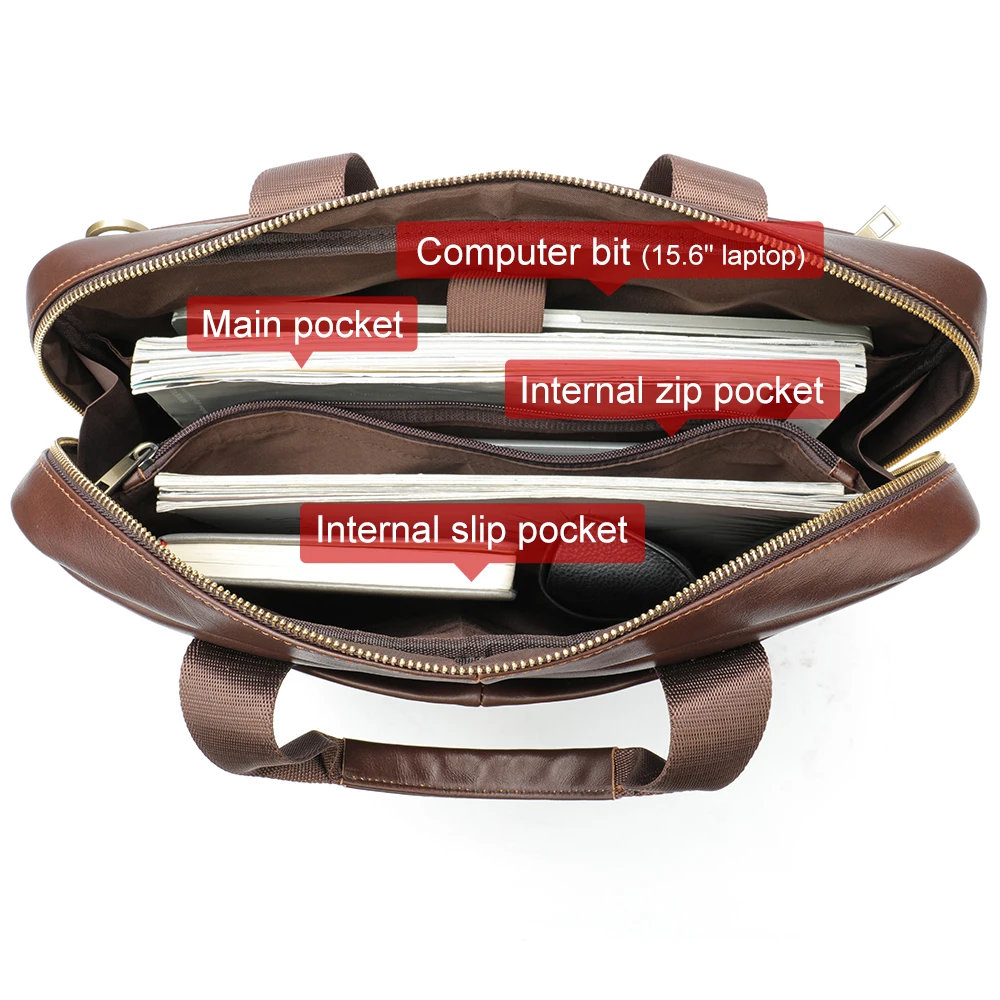
Top grain leather, having had its surface altered, trades some durability for increased resistance to daily wear and easier maintenance. This makes it particularly suitable for classic leather briefcases that need to maintain a consistent appearance in professional settings.
The visual difference becomes more pronounced over time. Full grain leather develops a rich patina—a warm glow and softened appearance that tells the story of its use. Top grain leather tends to maintain a more consistent appearance throughout its lifetime due to the protective finishes applied during manufacturing.
Durability and Longevity Analysis
When investing in leather goods, understanding durability factors helps justify the premium price point of quality leather.
Full grain leather’s exceptional durability comes from its intact natural fiber structure. These tightly packed fibers create a material that resists tearing and maintains structural integrity even after years of regular use. With proper care, full grain leather items commonly last 20-30 years or longer, with many becoming family heirlooms passed between generations.
Top grain leather, while still quite durable, typically offers a lifespan of 10-15 years with proper care. The sanding process removes some of the strongest fibers, slightly reducing its tensile strength compared to full grain. However, the protective finishes applied to top grain leather provide excellent resistance to everyday scuffs and stains.
Both leather types respond differently to common stressors:
- Scratching: Full grain shows scratches more easily but they often blend into the developing patina. Top grain resists surface scratching better initially.
- Puncture resistance: Full grain has superior puncture resistance due to its denser fiber structure.
- Flex points: Full grain maintains strength at flex points longer, while top grain may show wear at stress points earlier.
When exploring durable leather briefcase options, the thickness and fiber integrity of the leather should be primary considerations. Full grain leather’s natural oils also contribute to its longevity, helping it remain supple even as it ages.
For both leather types, proper care dramatically extends lifespan. Regular conditioning prevents drying and cracking, while appropriate cleaning maintains appearance without damaging the leather structure.
Aesthetic Evolution: Patina Development
One of the most distinctive differences between full grain and top grain leather is how they age and develop character over time—a quality leather enthusiasts call “patina.”
Patina refers to the gradual transformation of leather’s appearance as it’s exposed to light, oils from handling, and environmental factors. This natural aging process creates a warm glow, softened texture, and deepened color that many leather aficionados prize above all other leather qualities.
Full grain leather develops a remarkable patina because its natural surface remains intact. Over time, you’ll notice:
- Deepening of color tones, often becoming richer and more complex
- Development of a soft sheen in areas frequently touched
- Subtle darkening in creases and flex points
- A gradual softening of both appearance and texture
This evolution creates leather goods with unique character that tell the story of their use. Vintage style messenger bag designs often specifically use full grain leather to capitalize on this beautiful aging process.
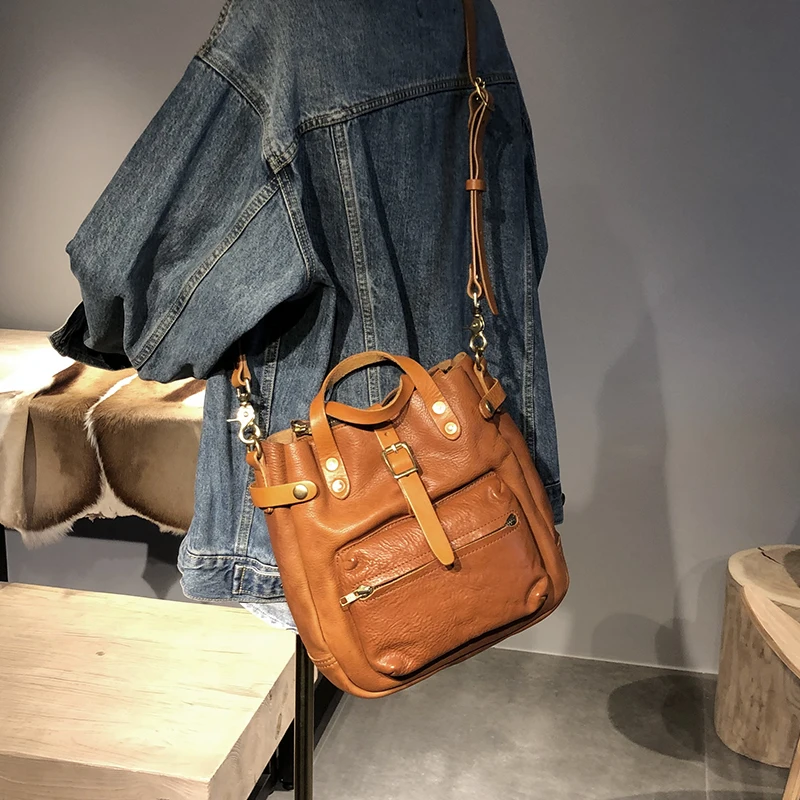
In contrast, top grain leather develops limited patina due to its protective finishes. The sanding process and applied coatings create a barrier that limits the leather’s ability to absorb oils and develop the characteristic aging patterns. While top grain leather will soften somewhat with use, it generally maintains a more consistent appearance throughout its lifespan.
This difference in aging is neither inherently good nor bad—it depends entirely on your preferences. Some people cherish the evolving appearance of full grain leather, while others prefer the more consistent look of top grain leather over time.
Practical Applications: Ideal Uses for Each Leather Type
Full Grain Leather: Best Applications
Full grain leather excels in products where longevity and character development are valued:
- Heritage briefcases and bags meant to last decades
- Professional portfolios and document holders that improve with age
- Quality belts and footwear that conform to the user over time
- Watch straps and wallets subject to frequent handling
- Statement furniture pieces intended as long-term investments
The natural variations and developing patina of full grain make it ideal for top-rated classic leather briefcases that serve as both functional tools and status symbols. Business professionals who value tradition and authenticity often prefer full grain for its ability to develop character that reflects their career journey.
Top Grain Leather: Best Applications
Top grain leather is particularly well-suited for:
- Fashion-forward accessories where consistent appearance matters
- Professional bags used in conservative environments
- Furniture pieces in high-traffic areas needing stain resistance
- Items requiring immediate softness and flexibility
- Products where a lower price point is needed without sacrificing quality
For business settings where a consistently polished appearance is expected, professional laptop messenger bags in top grain leather offer an excellent balance of professional aesthetics and practical durability.
Environmental considerations also play a role in choosing the appropriate leather type. Top grain’s better initial resistance to moisture makes it more suitable for humid climates or outdoor use, while full grain’s breathability makes it comfortable in varied conditions once properly treated.
Manufacturing and Production Process Differences
The journey from raw hide to finished leather reveals significant differences between full grain and top grain production methods.
Full Grain Leather Production
- Selection: Only the highest quality hides with minimal surface imperfections are chosen
- Hair removal: The hide undergoes a process to remove hair and prepare for tanning
- Tanning: Traditional methods like vegetable tanning or more modern chrome tanning preserve the natural surface
- Minimal finishing: Light conditioning and minimal surface treatment maintain natural characteristics
- Cutting and crafting: Skilled artisans work with the natural variations to create finished products
The production of full grain leather requires exceptional skill because manufacturers must work around natural imperfections rather than removing them. This constraint increases both production complexity and material waste.
Top Grain Leather Production
- Selection: Good quality hides are selected (though standards can be less stringent than for full grain)
- Hair removal: Similar initial processing to remove hair
- Splitting: The hide is often split to a uniform thickness
- Surface processing: The natural grain layer is sanded or buffed to remove imperfections
- Finishing: Application of pigments, protective coatings, and sometimes embossed grain patterns
- Cutting and crafting: More uniform material allows for more predictable production processes
The additional processing of top grain leather makes it easier to work with from a manufacturing perspective. The uniformity allows for more efficient cutting and less waste, contributing to its lower price point compared to full grain.
Specialty leather treatments like those used in crazy horse leather satchel production demonstrate how different processing techniques create unique leather properties. Crazy horse leather uses waxes and oils on full grain leather to create a distinctive pull-up effect where the color lightens when the leather is stretched or folded.
Care and Maintenance Requirements
Proper care significantly extends the life of leather goods, but maintenance needs differ between leather types.
Full Grain Leather Care
Full grain leather requires attentive but straightforward care:
- Regular dusting with a soft cloth to remove surface dirt
- Cleaning with a damp cloth when necessary, avoiding saturation
- Conditioning every 3-6 months with natural leather conditioner to replenish oils
- Protection from direct sunlight and extreme dryness
- Handling minor scratches by gently rubbing with fingertips to blend with natural oils
The natural pores in full grain leather make it more receptive to conditioning but also more vulnerable to staining. Following professionals guide leather bag care recommendations helps preserve both functionality and appearance.
Top Grain Leather Care
Top grain leather maintenance focuses on preserving the protective finish:
- Regular dusting to prevent buildup of particles that can abrade the finish
- Cleaning with specialized leather cleaners formulated for finished leathers
- Conditioning every 6-12 months with products designed for finished leather
- Protection from scratches and scuffs that may damage the surface treatment
- Avoiding excessive moisture that could affect the adhesion of the finish layer
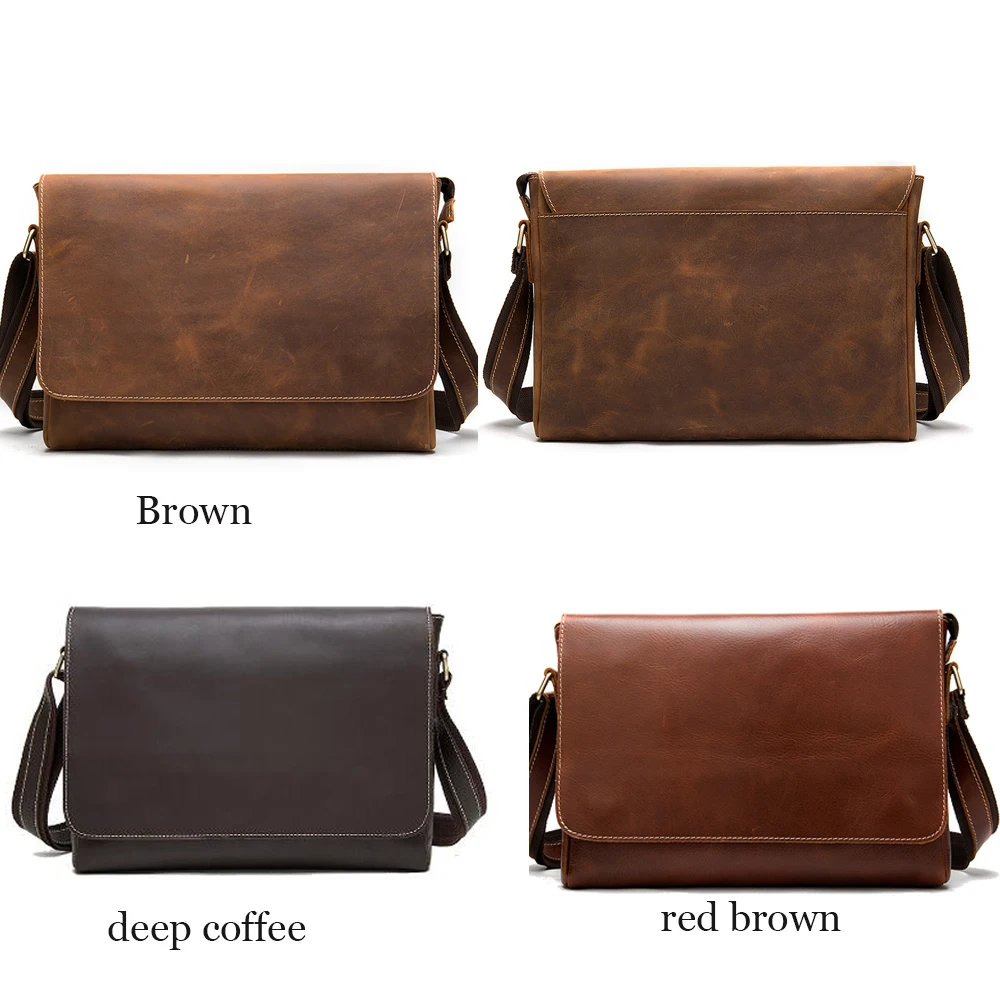
For both leather types, prompt attention to spills and regular maintenance prevents most common issues. The biggest care mistake with either leather type is neglect—regular, simple maintenance prevents the need for more intensive restoration later.
Men's Classic Leather Briefcase, Slim Leather Laptop Briefcase, Slim Leather Portfolio Briefcase
$93.67 Select options This product has multiple variants. The options may be chosen on the product pageClassic Laptop Briefcase, Men's Classic Leather Briefcase, Slim Leather Attache Case
Price range: $353.50 through $360.81 Select options This product has multiple variants. The options may be chosen on the product pageBlack Leather Briefcase, Leather Document Bag, Men's Classic Leather Briefcase
Genuine Crocodile Leather Executive Briefcase with Password Lock – Premium Business Document Carrier$1,201.87 Select options This product has multiple variants. The options may be chosen on the product pageCrazy Horse Leather Satchel, Men's Leather Satchel, Men's Professional Leather Messenger, Vintage Style Messenger Bag
$132.70 Select options This product has multiple variants. The options may be chosen on the product pageBlack Leather Briefcase, Classic Laptop Briefcase, Men's Classic Leather Briefcase, Slim Leather Laptop Briefcase
$228.72 Select options This product has multiple variants. The options may be chosen on the product pageBrown Leather Messenger Bag, Men's Leather Satchel, Men's Professional Leather Messenger
$118.87 Select options This product has multiple variants. The options may be chosen on the product page
Price Considerations and Value Assessment
The price difference between full grain and top grain leather products typically ranges from 20-50%, with full grain commanding the premium. Understanding the factors behind this price difference helps assess the true value of your purchase.
Several factors influence the higher cost of full grain leather:
- More selective hide sourcing requirements
- Greater waste during cutting due to working around natural imperfections
- Higher skill level required for manufacturing
- Limited availability of top-quality hides
- More time-intensive production process
When evaluating long-term value, consider these factors:
- Cost per year of use: Full grain’s longer lifespan often results in better long-term value despite higher initial cost
- Resale value: Well-maintained full grain leather items typically retain value better
- Repair potential: Full grain leather accepts repairs more readily, extending usable life
- Emotional value: The developing character and patina of full grain often creates stronger attachment
For budget-conscious shoppers, affordable quality leather briefcases made from top grain leather offer an excellent compromise between quality and price. These products provide many benefits of premium leather without the highest price point.
How to Identify Full Grain and Top Grain Leather
Learning to identify leather types helps ensure you’re getting what you pay for. Here’s how to distinguish full grain and top grain leather:
Full Grain Leather Identification
Look for these telltale signs:
- Visible natural grain pattern with subtle variations
- Natural markings, small scars, or growth marks on the surface
- Visible pores when examined closely (similar to human skin)
- Uneven or slightly inconsistent texture across the surface
- Rich, natural smell
- Edges that show consistent density throughout
- Develops small wrinkles when pinched that gradually smooth out
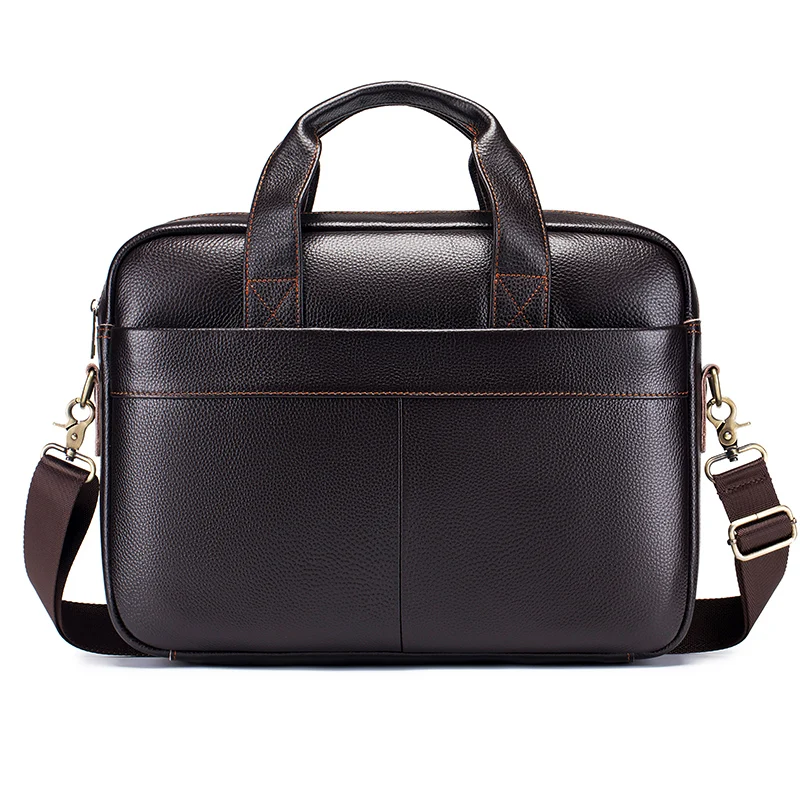
Top Grain Leather Identification
Top grain leather typically shows these characteristics:
- Very uniform appearance with consistent coloration
- Smoother surface with few or no natural markings
- Less visible pore structure
- Even texture across the entire piece
- May have a slightly more chemical smell when new
- Often has a slight sheen from protective finishes
- When cut, may show a more consistent color throughout
When choosing the perfect leather briefcase, examine both the surface and the edges of the leather. The edge reveals whether the natural grain is intact (full grain) or has been altered (top grain).
Simple tests you can perform include:
- Water drop test: Full grain leather slowly absorbs small water drops; top grain often causes water to bead up initially
- Smell test: Full grain has a richer, more natural leather smell
- Flexibility test: Both should be flexible, but full grain often feels more substantial
- Pattern examination: Look for natural variations (full grain) versus uniform patterns (top grain)
Be wary of terms like “genuine leather” and “bonded leather,” which refer to lower-quality products despite sounding premium. When shopping for leather document bag options or other professional accessories, understanding these distinctions ensures you invest wisely.
Common Misconceptions About Leather Grades
Several persistent myths about leather grades can confuse even savvy shoppers:
Myth: “Genuine Leather” indicates high quality.
Fact: “Genuine Leather” is actually a lower grade than full grain or top grain, typically made from split leather with an artificial surface applied.
Myth: Top grain leather isn’t “real leather.”
Fact: Top grain is real leather—it’s simply been processed to remove imperfections and create a more uniform appearance.
Myth: Full grain leather is completely waterproof.
Fact: No natural leather is inherently waterproof without treatment. Full grain leather is actually more porous initially than top grain.
Myth: Top grain leather won’t age well or develop character.
Fact: While it won’t develop the same patina as full grain, quality top grain leather will still soften and develop subtle character over time.
Myth: All full grain leather is vegetable-tanned.
Fact: Full grain refers to the surface treatment, not the tanning method. Full grain leather can be tanned using various methods, including chrome tanning.
Myth: The term “premium leather” always means full grain.
Fact: “Premium” is a marketing term with no standardized definition in the leather industry.
Understanding these distinctions helps when researching the definitive guide ideal leather briefcase for your needs. Marketing terms can be misleading, so focusing on specific leather grades rather than general quality claims ensures a better purchase decision.
Buying Guide: Making the Right Choice for Your Needs
Choosing between full grain and top grain leather depends on your specific priorities. Consider these factors to guide your decision:
When to Choose Full Grain Leather
Full grain leather may be ideal if you value:
– Maximum durability and longevity
– Products that develop unique character over time
– Natural appearance with authentic variations
– Pieces that can become heirlooms
– The highest quality regardless of price
When to Choose Top Grain Leather
Top grain leather might be better if you prioritize:
– More uniform, refined appearance
– Better initial stain and water resistance
– Lower maintenance requirements
– More affordable price point
– Consistent color and texture
Your lifestyle and intended use significantly impact which leather type will serve you best. Consider how frequently you’ll use the item, the environments it will be exposed to, and how much maintenance you’re willing to perform.
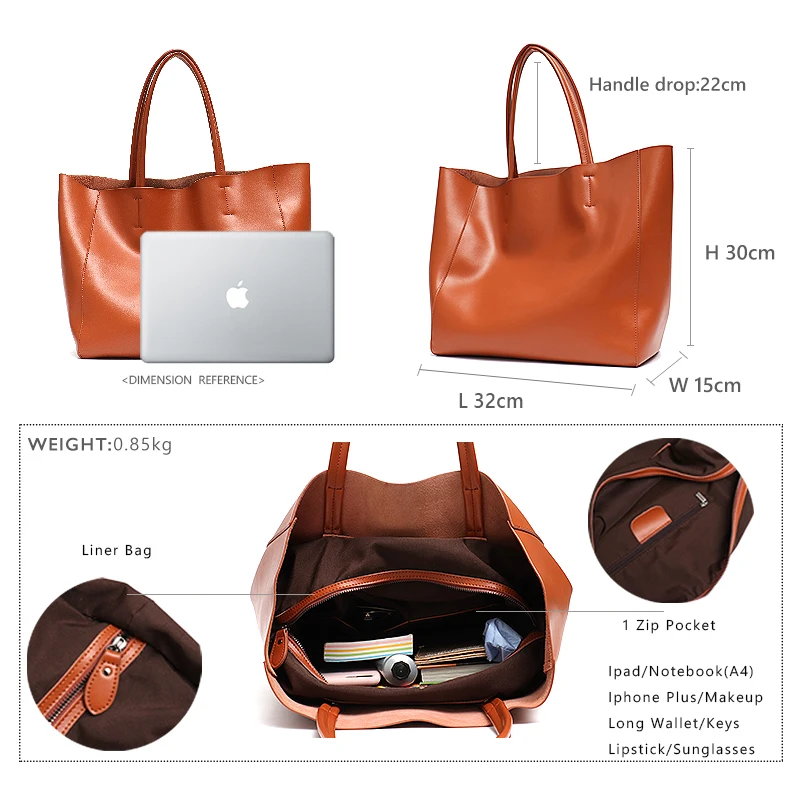
For those debating between different bag styles, understanding how large vs slim briefcase options perform with different leather types can help narrow your choices. Larger bags in full grain leather develop patina more dramatically in areas of frequent handling, while slim designs in top grain maintain their sleek appearance longer.
For professional settings where appearance consistency matters, the mens professional leather messenger collections in top grain leather offer excellent performance while maintaining a polished look day after day.
Frequently Asked Questions
Is top grain leather real leather?
Yes, top grain leather is absolutely real leather. It comes from the top portion of the hide but has had the very outermost layer sanded and buffed to remove imperfections.
Does top grain leather peel or flake?
Quality top grain leather should not peel or flake. If a leather product is peeling, it’s likely a lower-quality “genuine leather” or “bonded leather” product, not true top grain leather.
Which leather is better for furniture: full grain or top grain?
For furniture that receives heavy daily use, top grain often offers the best balance of durability and practicality. Its better stain resistance and more uniform appearance make it family-friendly while still providing excellent longevity.
What other leather grades should I know about?
Beyond full grain and top grain, other common grades include split leather (the lower layers of the hide), corrected grain leather (heavily processed and embossed with an artificial grain), genuine leather (a lower quality grade), and bonded leather (made from leather scraps bonded with adhesives).
How can I tell if I’m getting genuine full grain leather?
Look for natural variations in the surface, visible pores, and an uneven texture. Full grain leather should have a rich natural smell and develop a patina over time. Reputable sellers will specifically state “full grain” in their product descriptions.
The definitive guide classic leather briefcase resources highlight how these quality differences appear in finished products, helping buyers make more informed decisions.
Leather Care Products Comparison for Each Type
Different leather types require specific care products to maintain their best appearance and extend their lifespan:
| Care Need | Full Grain Leather | Top Grain Leather |
|---|---|---|
| Cleaning | Saddle soap, mild leather cleaners | Leather cleaners formulated for finished leather |
| Conditioning | Natural oils and waxes (neatsfoot oil, beeswax) | Lightweight conditioners that won’t affect finish |
| Protection | Natural waxes, water/stain repellents designed for natural leather | Leather protectors formulated for finished leather |
| Frequency | Cleaning as needed; conditioning every 3-6 months | Cleaning as needed; conditioning every 6-12 months |
| Restoration | Can often be restored even after significant wear | More difficult to restore once finish is damaged |
When caring for full grain leather, use products that nourish the leather without building up on the surface. For top grain leather, look for products specifically designed for finished leathers that maintain the protective coating.
Natural-based products generally work better for full grain leather, allowing it to breathe and develop patina. Synthetic products often work well for top grain leather to maintain its finish and appearance.
Environmental and Ethical Considerations
The leather industry has significant environmental impacts, though how your leather is sourced and processed makes a substantial difference in its sustainability profile.
Full grain leather production generally involves:
– Less chemical processing than heavily finished leathers
– Potential for traditional vegetable tanning using plant-based materials
– Longer product lifespan, reducing consumption over time
Top grain leather production typically involves:
– More intensive processing with additional chemicals
– Often uses chrome tanning, which is efficient but can have environmental impacts
– Creates more uniform products that may be cut with less waste
For environmentally conscious consumers who prefer animal-free alternatives, vegan leather briefcase options provide a way to enjoy the aesthetic of leather without using animal products. Modern vegan leathers have significantly improved in quality and durability, though they typically don’t develop the character of animal leather over time.
When considering ethical leather consumption, look for:
– Transparent sourcing information
– Responsible tanning practices
– Companies with established environmental policies
– Leather sourced as a byproduct of meat production rather than from animals raised specifically for leather
The most sustainable approach to leather consumption is investing in high-quality pieces that will last for decades rather than disposable fashion items, regardless of which specific leather type you choose.

